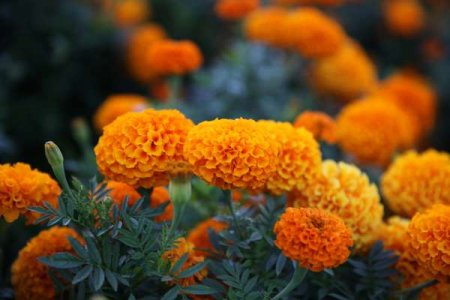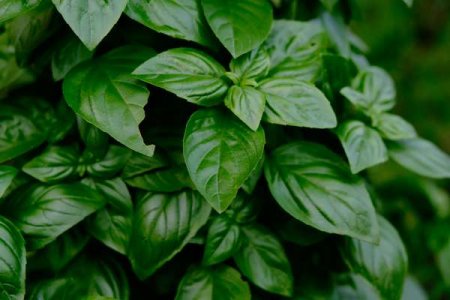Say goodbye to aphids! Discover 8 plants garden experts swear by for a pest-free summer
- Replies 0
If you’ve ever strolled out to your vegetable patch, coffee in hand, only to find your prized cucumbers or roses crawling with tiny green invaders, you know the heartbreak of an aphid attack. These sap-sucking pests are the bane of gardeners everywhere, especially when it comes to tender crops like broccoli, cabbage, peppers, and cucumbers.
But before you reach for the chemical sprays, take heart: nature has its own arsenal of aphid-fighting allies, and they’re as beautiful as they are effective.
At The GrayVine, we believe gardening should be a joy, not a battle. That’s why we’ve dug deep (pun intended!) into expert advice to bring you the ultimate guide to eight powerhouse plants that will help keep your garden aphid-free all summer long.
Whether you’re a seasoned green thumb or just getting your hands dirty for the first time, these companion plants are easy to grow, multipurpose, and—best of all—safe for you, your family, and the pollinators we all depend on.
Why Aphids Are a Problem—and Why Companion Planting Works
Aphids are tiny, but their impact is mighty. They multiply rapidly, drain the life from your plants, and can even spread plant diseases.
The good news? Aphids are picky eaters, and certain plants either repel them with strong scents or attract their natural predators. This is the magic of companion planting: by mixing in the right herbs and flowers, you can create a garden ecosystem that keeps pests in check—no toxic sprays required.

Ready to meet your new garden heroes? Let’s dig in!
1. Marigolds: The Golden Guardians
Marigolds aren’t just a pretty face in the flower bed. According to Rafia Khan, an entomologist at Texas A&M AgriLife, these cheerful blooms release a scent that masks the aroma of your more vulnerable crops, making it harder for aphids to find their favorite snacks.
Even better, marigolds attract lady beetles and lacewings—two of the most voracious aphid predators around.
How to Grow: Marigolds are sun-lovers, thriving in USDA zones 2a-11b. Give them at least six hours of direct sunlight and keep the soil moist but not soggy. They’re perfect for containers or borders, and their bright blooms will lift your spirits every time you step outside.
2. Chives: The Oniony Offense
Chives do double duty in the garden: they add a mild onion flavor to your kitchen creations and send aphids packing with their pungent aroma.
The secret? Volatile sulfur compounds that act as a natural insecticide, confusing aphids and keeping them away from your roses, lettuce, and carrots.
Also read: Breathe cleaner air while you sleep with these 6 magical indoor home additions
How to Grow: Chives are hardy in zones 3-9 and love well-draining soil and full sun (six to eight hours daily). Snip the leaves for salads and omelets, and enjoy the bonus of fewer pests.
3. Lavender: The Fragrant Fortress
Who doesn’t love the soothing scent of lavender? Turns out, aphids can’t stand it. Ward Dilmore, founder of Petrus Luxury Estate Landscaping, notes that lavender not only repels aphids but also attracts beneficial insects like ladybugs and butterflies.
How to Grow: Lavender thrives in zones 5-9 with six to eight hours of sun and well-drained soil. It’s perfect for containers, borders, or even as a fragrant indoor plant. Plus, you can dry the flowers for sachets or tea!
4. Dill: The Delicate Defender
Dill’s feathery foliage and distinctive scent make it a favorite for both cooks and gardeners. But did you know it’s also a magnet for hoverflies and lacewings, two insects that feast on aphids? Plant dill near leafy greens or cucumbers for a one-two punch of pest control and culinary delight.

How to Grow: Dill is easy to grow in zones 2-11. Give it six to eight hours of sun and keep the soil moist. Just remember to give it space—dill can get tall and bushy!
5. Mint: The Aromatic Avenger
Mint’s strong, refreshing aroma is a turn-off for aphids, who rely on their sense of smell to find host plants. The essential oils in mint leaves confuse and repel these pests, but be warned: mint is a vigorous spreader. Plant it in containers or confined beds to keep it from taking over.
How to Grow: Mint does well in zones 3-9, tolerating both sun and partial shade. Four hours of sunlight and consistently moist soil will keep your mint happy—and your garden aphid-free.
6. Catnip: The Feline Favorite (and Aphid Foe)
Catnip’s rootbeer-like scent may attract neighborhood cats, but it’s a big 'no thanks' for aphids. Plant catnip near squash or collards—two aphid magnets—to keep your crops safe. Just be prepared for a few feline visitors!
How to Grow: Catnip thrives in zones 3-9 with six to eight hours of sun and well-drained, moist soil. It’s easy to grow and can be dried for homemade cat toys or tea.
Also read: These signs will tell you if your plants are begging for more sunlight!
7. Garlic: The Pungent Protector
Garlic isn’t just for warding off vampires—it’s also a powerful aphid repellent. Its strong aroma confuses and deters aphids, making it a great companion for roses and other susceptible plants.
How to Grow: Garlic prefers zones 3-5 but can be grown in containers anywhere with six to eight hours of sun. Water deeply but avoid soggy soil. Bonus: homegrown garlic tastes better than anything from the store!
8. Basil: The Kitchen and Garden MVP
Basil is a summer staple in the kitchen, but it’s also a secret weapon against aphids. Its essential oils—like estragole, citronellal, and limonene—are unappealing to aphids and can protect peppers, beans, and other crops.
How to Grow: Basil loves warmth and flourishes in zones 10-11, but you can grow it in containers anywhere with six to eight hours of sun and moist soil. Harvest leaves regularly to keep the plant bushy and productive.

Extra Tips for an Aphid-Free Garden
- Mix and Match: Don’t be afraid to plant several of these aphid-repelling plants together. The more diverse your garden, the harder it is for pests to get a foothold.
- Attract Beneficial Insects: Ladybugs, lacewings, and hoverflies are your best friends. Avoid broad-spectrum pesticides that can harm these helpful bugs.
- Inspect Regularly: Check the undersides of leaves for aphids and remove them by hand or with a blast of water if you spot an infestation.
- Healthy Soil, Healthy Plants: Strong, well-fed plants are less susceptible to pests. Add compost and mulch to keep your soil in top shape.
Related stories:

Have you tried companion planting to keep aphids at bay? Do you have a favorite herb or flower that’s worked wonders in your garden? Or maybe you’ve got a question about getting started? We’d love to hear your stories, tips, and questions in the comments below!
But before you reach for the chemical sprays, take heart: nature has its own arsenal of aphid-fighting allies, and they’re as beautiful as they are effective.
At The GrayVine, we believe gardening should be a joy, not a battle. That’s why we’ve dug deep (pun intended!) into expert advice to bring you the ultimate guide to eight powerhouse plants that will help keep your garden aphid-free all summer long.
Whether you’re a seasoned green thumb or just getting your hands dirty for the first time, these companion plants are easy to grow, multipurpose, and—best of all—safe for you, your family, and the pollinators we all depend on.
Why Aphids Are a Problem—and Why Companion Planting Works
Aphids are tiny, but their impact is mighty. They multiply rapidly, drain the life from your plants, and can even spread plant diseases.
The good news? Aphids are picky eaters, and certain plants either repel them with strong scents or attract their natural predators. This is the magic of companion planting: by mixing in the right herbs and flowers, you can create a garden ecosystem that keeps pests in check—no toxic sprays required.

Certain companion plants like marigolds, chives, lavender, dill, mint, catnip, garlic and basil can help keep aphids away from your veggie garden all summer long. Image source: Viktor Forgacs / Unsplash.
Ready to meet your new garden heroes? Let’s dig in!
1. Marigolds: The Golden Guardians
Marigolds aren’t just a pretty face in the flower bed. According to Rafia Khan, an entomologist at Texas A&M AgriLife, these cheerful blooms release a scent that masks the aroma of your more vulnerable crops, making it harder for aphids to find their favorite snacks.
Even better, marigolds attract lady beetles and lacewings—two of the most voracious aphid predators around.
How to Grow: Marigolds are sun-lovers, thriving in USDA zones 2a-11b. Give them at least six hours of direct sunlight and keep the soil moist but not soggy. They’re perfect for containers or borders, and their bright blooms will lift your spirits every time you step outside.
2. Chives: The Oniony Offense
Chives do double duty in the garden: they add a mild onion flavor to your kitchen creations and send aphids packing with their pungent aroma.
The secret? Volatile sulfur compounds that act as a natural insecticide, confusing aphids and keeping them away from your roses, lettuce, and carrots.
Also read: Breathe cleaner air while you sleep with these 6 magical indoor home additions
How to Grow: Chives are hardy in zones 3-9 and love well-draining soil and full sun (six to eight hours daily). Snip the leaves for salads and omelets, and enjoy the bonus of fewer pests.
3. Lavender: The Fragrant Fortress
Who doesn’t love the soothing scent of lavender? Turns out, aphids can’t stand it. Ward Dilmore, founder of Petrus Luxury Estate Landscaping, notes that lavender not only repels aphids but also attracts beneficial insects like ladybugs and butterflies.
How to Grow: Lavender thrives in zones 5-9 with six to eight hours of sun and well-drained soil. It’s perfect for containers, borders, or even as a fragrant indoor plant. Plus, you can dry the flowers for sachets or tea!
4. Dill: The Delicate Defender
Dill’s feathery foliage and distinctive scent make it a favorite for both cooks and gardeners. But did you know it’s also a magnet for hoverflies and lacewings, two insects that feast on aphids? Plant dill near leafy greens or cucumbers for a one-two punch of pest control and culinary delight.

Many of these plants not only repel aphids but also attract beneficial insects such as lady beetles and lacewings, which prey on aphids and help maintain a healthy garden ecosystem. Image source: Julia Kwiek / Unsplash.
How to Grow: Dill is easy to grow in zones 2-11. Give it six to eight hours of sun and keep the soil moist. Just remember to give it space—dill can get tall and bushy!
5. Mint: The Aromatic Avenger
Mint’s strong, refreshing aroma is a turn-off for aphids, who rely on their sense of smell to find host plants. The essential oils in mint leaves confuse and repel these pests, but be warned: mint is a vigorous spreader. Plant it in containers or confined beds to keep it from taking over.
How to Grow: Mint does well in zones 3-9, tolerating both sun and partial shade. Four hours of sunlight and consistently moist soil will keep your mint happy—and your garden aphid-free.
6. Catnip: The Feline Favorite (and Aphid Foe)
Catnip’s rootbeer-like scent may attract neighborhood cats, but it’s a big 'no thanks' for aphids. Plant catnip near squash or collards—two aphid magnets—to keep your crops safe. Just be prepared for a few feline visitors!
How to Grow: Catnip thrives in zones 3-9 with six to eight hours of sun and well-drained, moist soil. It’s easy to grow and can be dried for homemade cat toys or tea.
Also read: These signs will tell you if your plants are begging for more sunlight!
7. Garlic: The Pungent Protector
Garlic isn’t just for warding off vampires—it’s also a powerful aphid repellent. Its strong aroma confuses and deters aphids, making it a great companion for roses and other susceptible plants.
How to Grow: Garlic prefers zones 3-5 but can be grown in containers anywhere with six to eight hours of sun. Water deeply but avoid soggy soil. Bonus: homegrown garlic tastes better than anything from the store!
8. Basil: The Kitchen and Garden MVP
Basil is a summer staple in the kitchen, but it’s also a secret weapon against aphids. Its essential oils—like estragole, citronellal, and limonene—are unappealing to aphids and can protect peppers, beans, and other crops.
How to Grow: Basil loves warmth and flourishes in zones 10-11, but you can grow it in containers anywhere with six to eight hours of sun and moist soil. Harvest leaves regularly to keep the plant bushy and productive.

Aromatic herbs such as mint, chives, garlic and basil are particularly effective, thanks to their strong scents and essential oils that confuse and deter aphids. Image source: Yakov Leonov / Unsplash.
Extra Tips for an Aphid-Free Garden
- Mix and Match: Don’t be afraid to plant several of these aphid-repelling plants together. The more diverse your garden, the harder it is for pests to get a foothold.
- Attract Beneficial Insects: Ladybugs, lacewings, and hoverflies are your best friends. Avoid broad-spectrum pesticides that can harm these helpful bugs.
- Inspect Regularly: Check the undersides of leaves for aphids and remove them by hand or with a blast of water if you spot an infestation.
- Healthy Soil, Healthy Plants: Strong, well-fed plants are less susceptible to pests. Add compost and mulch to keep your soil in top shape.
Related stories:
- Do your supermarket plants always die? Here’s what experts want you to know
- The underrated layout secret that turns average gardens into stunning showpieces
Key Takeaways
- Certain companion plants like marigolds, chives, lavender, dill, mint, catnip, garlic and basil can help keep aphids away from your veggie garden all summer long.
- Many of these plants not only repel aphids but also attract beneficial insects such as lady beetles and lacewings, which prey on aphids and help maintain a healthy garden ecosystem.
- Aromatic herbs such as mint, chives, garlic and basil are particularly effective, thanks to their strong scents and essential oils that confuse and deter aphids.
- When planting aggressive growers like mint and catnip, it's best to use containers or control their growth, as they can easily take over your garden if left unchecked.
Have you tried companion planting to keep aphids at bay? Do you have a favorite herb or flower that’s worked wonders in your garden? Or maybe you’ve got a question about getting started? We’d love to hear your stories, tips, and questions in the comments below!






